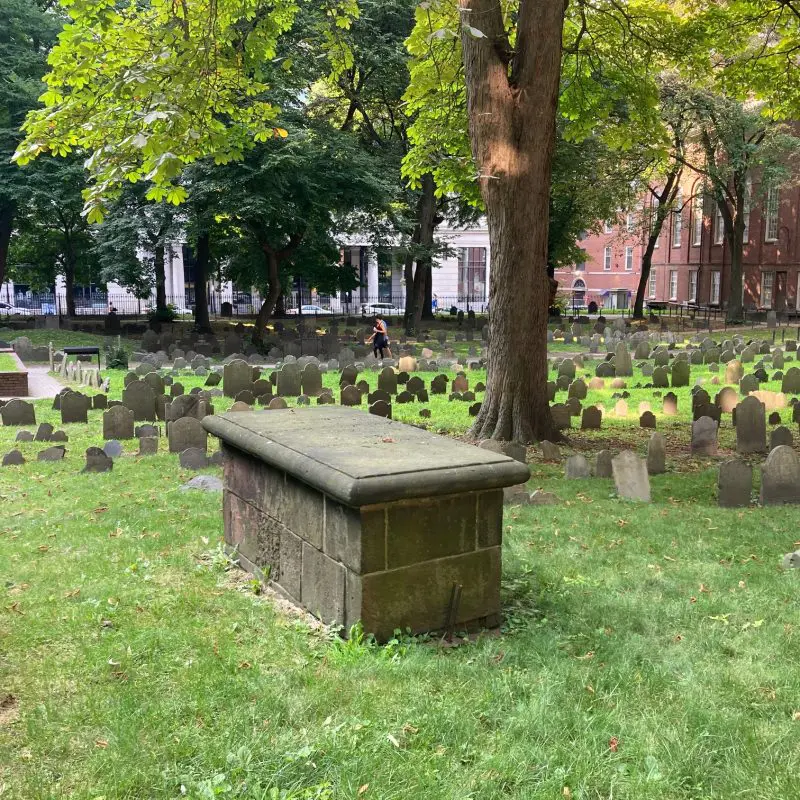The site of Samuel Sewall’s home is on Washington Street in Downtown Crossing.
More About Samuel Sewall Home, Site of
While some historic places in Boston can be imagined in the present day, one of the most difficult to picture is that of Judge Samuel Sewall. He lived in the home of his wife Hannah Hull’s parents, in the heart of what is called Downtown Crossing, at Summer and Washington Street. A Macy’s department store has been located on the spot since 1996. This is the same location where Boston’s first department store, Jordan Marsh, did business for more than 100 years. Jordan Marsh was a New England icon.
Samuel Sewall was one of the most important figures in colonial Massachusetts. Born in England in 1652 to Henry Sewall Jr., he grew up in Newbury, MA, earned two degrees at Harvard, and married Hannah Hull in 1676. After his wedding he moved into the Hull home and remained there for the rest of his life. Marrying the daughter of the commonwealth’s wealthy mint master, John Hull, made Sewall a rich man as well. He eventually acquired the substantial land holdings (hundreds of acres) that his father-in-law owned in Muddy River to the west. Sewall called his rural estate Brooklin. In 1705, Muddy River residents were granted the right to separate from Boston, and named their town Brookline. (Samuel Sewall Jr. was the first Town Clerk.)
Samuel Sewall is best remembered for his role as a judge on the Court of Oyer and Terminer in 1692, hearing the Salem witchcraft cases. Although he initially believed that the court was doing necessary work to rid the commonwealth of the devil’s threat, in time he came to question the guilt of the accused and the court’s methods. He is the only one of the magistrates who publicly apologized for his part in the tragedy. In 1697, Judge Sewall’s apology was read to the congregation of Boston’s Third Church, by Rev. Samuel Willard.
In the diaries that Samuel Sewall kept, from 1674-1729, a fascinating picture is painted of colonial life and the eminent people of the time. As Sewall biographer Richard Francis says, “Sewall’s story is richer and more detailed than that of any other colonial American. The diary he left behind provides sufficient material to re-create the most rounded human being (in more senses than one) of all the New England Puritans … Sewall gives us a warm alternative to our general impression of beetle-browed Puritans fiercely disapproving of all and sundry. Three hundred years age he was schooling a Native American boy in his own house for entry to Harvard. He penned one of the first attacks on the institution of slavery ever written in English. He was a loving husband and father, a diplomat, a politician, a poet, an anti-slavery agitator, an advocate for Indian land rights, a utopian theorist, a merchant, a judge, a campaigner against the wearing of periwigs, a friend and confidant of people from every section of colonial New England…”
Samuel Sewall died in 1730 and is buried in the Sewall tomb in the Granary Burying Ground.
450 Washington Street






